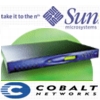The Small Business Support Network
Helping you get more from your business!
 SupportEmail Software ConfigurationTo set up your email program to send and receive email from your domain, you need the following information:
Configuration DetailsUser NameUser name is the name you provided when you applied for this account (all packages), or when you added a new user via the Site Admin Routine (hosting packages only).
PasswordThe password you use is the password provided when you applied for this account (all packages), or when you added a new user via the Site Admin Routine (hosting packages only).
POP3 Server NameThe POP3 Server is the mail server which you check to RECEIVE your email. The value required is yourdomainname.com
SMTP Server NameThe SMTP Server is the mail server which you use to SEND your email. The value required is also yourdomainname.com
POP before SMTPThe mail server is set up so that you must log in and check mail on your POP server before you are allowed to send any mail through your SMTP server.This is a "safety precaution" to prevent unauthorised people using your domain's mail server to send unsolicited email or spam. If you get an error message "Relaying Denied" it will mean that you have tried to send a message without first checking for incoming messages.
Alternate Email Checking ProcedureAn alternate method of checking your email is to log in to OpenWebMail at http://www.yourdomainname.com/openwebmail/ (once delegated) with your user name and password.This method allows you to send and receive emails using your web browser instead of email software. It can be useful for example, if you think you may be having difficulties - i.e. it seems really "slow" - when you are checking email with your email software. The "slowdown" could simply be a LARGE message that is taking a lot of time to download. Check with OpenWebMail first in such instances. You can then decide to read and delete these large messages at the server, rather than downloading them through your email software.
Email Rules and FiltersA good practice to speed up the processing of incoming emails is to use the "rules" and/or "filters" options in your email software.Careful setup of these things can, for example,
|
||